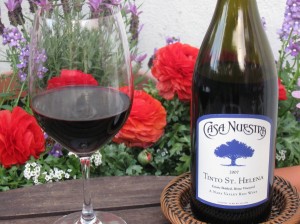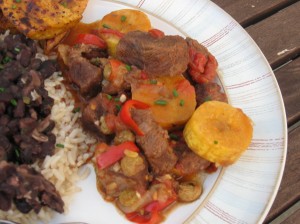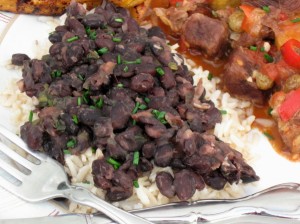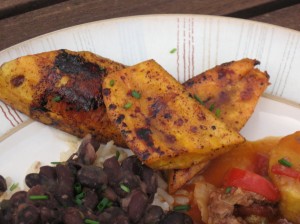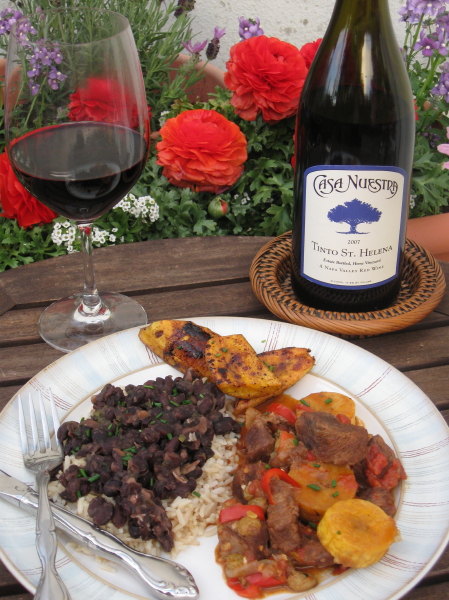Feb 15 2011
Spicy Nature of Field Blends
Once upon a time in Napa Valley, “field blend” red wines graced many a table. Popular as they were, whims drove vineyards to change vine composition such that today to find a true single vineyard “field blend” in Napa Valley is a rarity.
What is a Field Blend Red Wine?
To be a “field blend”, the varietals used are all planted in a single vineyard, all experiencing similar climate and soil conditions. Long ago, vintners would plant fields with many varietals in the same vineyard to help hedge agricultural risk. If one varietal was experiencing a bad growing year, the other varietals would invariably make up for the other’s lackluster season. Today, while wineries might offer Mixed Blacks red wine, it is increasingly difficult to find a vineyard hosting all of the featured mixed black red grape varietals. It is even more difficult to find such a vineyard on the winery’s actual estate.
What is a Mixed Blacks Red Wine?
A “mixed blacks” red wine typically is a blend of old world rustic grapes known for their red flesh and when made into wine, create deep dark wine. There are many of these dark red varietals, including charbono, petite sirah, alicante bouschet, among others. When several of these varietals are combined into one wine, a predominantly spicy character is readily recognizable to even the novice palate.
Casa Nuestra Winery (“Casa Nuestra”), located in St. Helena, not only hosts organic vineyards but a single vineyard with 9 varietals which are used to make the winery’s “Tinto St. Helena”. Casa Nuestra in the 1950’s acquired a vineyard in Oakville surrounded by now famous wineries. In that Oakville vineyard, Casa Nuestra planted several varietals, of which 9 were used to create its “Tinto Classico”. Later to keep up with demand and consumer affordability, Casa Nuestra planted the same vines in its St. Helena vineyard. Combining Old-Clone Zinfandel, Rofosco, Alicante Bouschet, Carignane, Petite Sirah, Cabernet Sauvignon, Refosco, Napa Gamay, and one additional “mystery grape,” Casa Nuestra produces its Tinto field blend red wine. The distinguishing difference between its “Tinto Classico” (produced from the Oakville vineyard) and the “Tinto St. Helena” (produced from the St. Helena estate vineyard) aside from geographical location is that the “Tinto St. Helena” includes increased amounts of Rofosco, Petite Sirah, Carignane and Zinfandel. The exact composition of each varietal used will vary each year, but by doing so, Casa Nuestra is adhering closely to the history and tradition of true “field blend” red wines.
Pouring the 2007 Tinto St. Helena into the glass, the coloring does not disappoint the eye as it is expectedly dark like ripe mountain blackberries. Its bouquet drifts upward with nuances of roasted plums and cocoa. On the palate, rich black cherry and blackberry smoothly coat the palate, with spices of nutmeg, roasted fennel and white pepper. With finely grained tannins, the wine coasts across the palate brining explosive flavors at the back filling the mouth with a drawn out finish long after the wine is gone. A gentle noticeable acidity dances on the palate with spritzs of ripe dark mountain berry fruit.
As previously indicated, the 2007 Tinto St. Helena is dark in flavor and equally spicy in its character. Given the spicy distinguishing characteristic of the “mixed blacks” wine, it is only fitting to introduce softer spices of Cuban food in this week’s menu:
1) Savory Cuban Beef Red Pepper Stew with Plantains; and
2) Cuban Black Beans and Brown Rice.
Here a savory, slightly spiced beef stew meets “sweet” with the introduction of plantain and golden raisins. Sautéed sweet red bell pepper, sweet onion and several cloves of garlic simmer with browned beef chuck roast, chopped tomatoes, smoked paprika, fresh marjoram, bay leaves and cumin.
The combination of sweet and savory is utterly delicious. When paired with the wine, rich spices and warm dark berry fruit come forward with a finish of black cherry that is well worth slowly savoring. Tender meat effortlessly falls apart with a nudge of a fork or soup spoon while lingering warm spices cling to the meat’s outer edges. Warm spiced flavors shift to a subtle sweetness due to the plantains and golden raisins in the stew, flirting with the palate and gently warming the stomach on a chilly February evening.
Pair this wine with traditional Cuban black beans and watch the fireworks of this wine explode on the palate. The 2007 Tinto St. Helena readily embraces cumin, green onion and garlic in the black beans to boldly set forth big spices and pepper from the wine itself.
Excess plantains are gently and slowly fried and ultimately brushed with a slight glaze of balsamic vinegar to create a sweet treat and garnish on the plate.
Mixed black bottling show a unique versatility compared to other varietals and pair innately well with spicy exotic fare. Most other varietals would struggle and fight with such fare and risk leaving the palate confused. Here, however, the wine uniquely holds its own on the palate yet delivers a calm confident message that it is meant or intended to be there.
With such character, field blends of mixed black bottling should be enjoyed while they are still in existence and perhaps with dedicated interest, those remaining vineyards will continue to exist, intact with such historic plantings.
Comments Off on Spicy Nature of Field Blends

